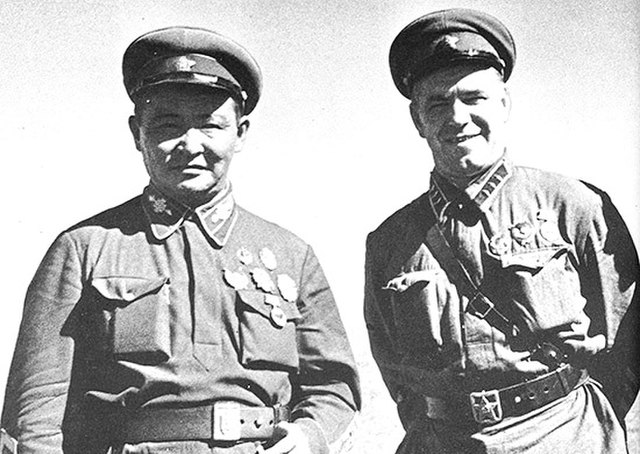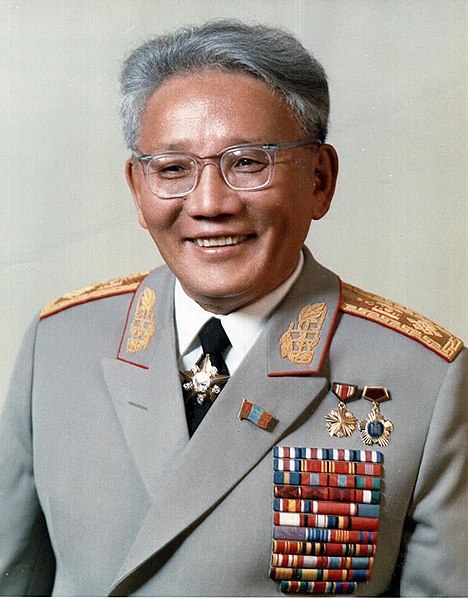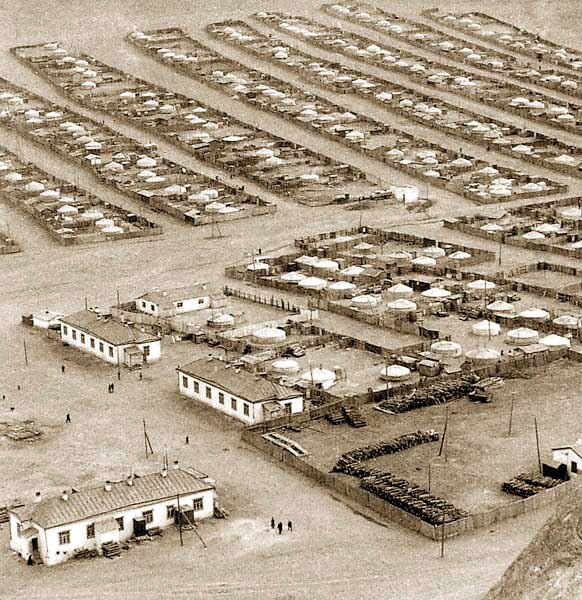Anandyn Amar was the head of state of the Mongolian People’s Republic from 1932 to 1936 and twice served as prime minister from 1928–1930 and again from 1936–1939. A widely respected politician, Amar was known for his eloquent defense of Mongolian independence in the face of increasing Soviet domination. Despite this, he proved powerless in preventing Minister of Interior Khorloogiin Choibalsan and the Soviet NKVD from carrying out mass purges of nearly 30,000 Mongolians during his second term as prime minister between 1937 and 1939. Amar's popularity ultimately led to his purge by the pro-Soviet Choibalsan who had him charged with counterrevolution in 1939. Amar was sent to Moscow for trial and executed on July 10, 1941.
Memorial obelisk at the Kommunarka execution site in Moscow, Russia, commemorating the Mongolian victims, including Amar
Mongolian People's Republic
The Mongolian People's Republic was a socialist state that existed from 1924 to 1992, located in the historical region of Outer Mongolia under the Qing dynasty. It was officially recognized by the Nationalist government as independent from the Republic of China in 1946. Until 1990, it was a one-party state ruled by the Mongolian People's Revolutionary Party, and maintained close political and economic ties with the Soviet Union, as part of the Eastern Bloc.
Khorloogiin Choibalsan (left), who led the MPR from 1939 to 1952, and Georgy Zhukov at Khalkhin Gol in 1939
Yumjaagiin Tsedenbal led the MPR from 1952 to 1984
Yurt quarter in Ulaanbaatar in 1972
Darkhan Railway Station in 1985





